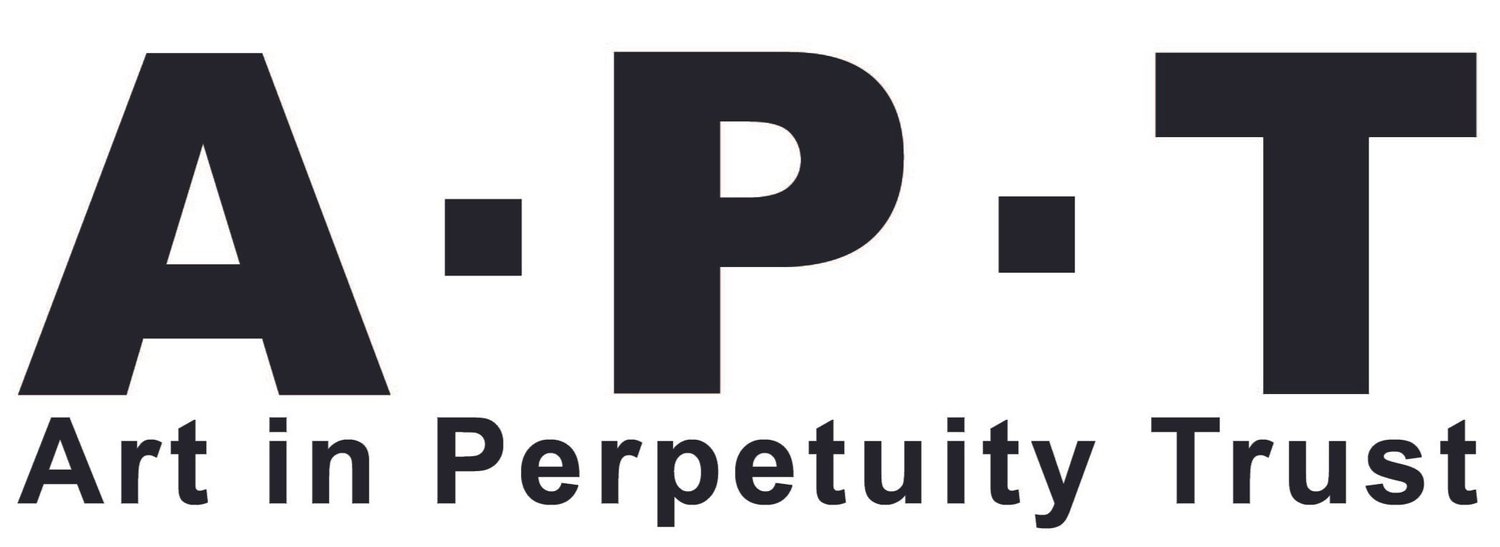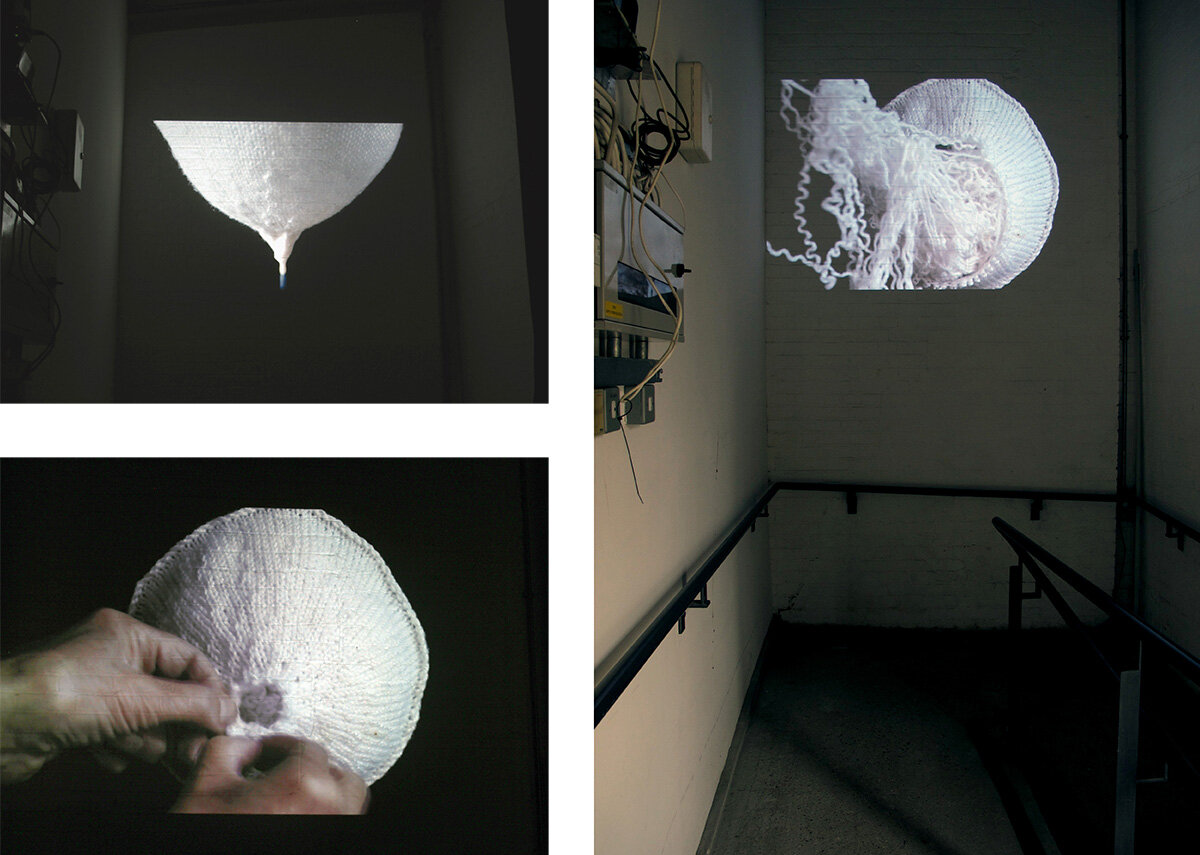LIZ HARRISON
Still image from the Installation COLD STORAGE, at University of Greenwich Gallery, 2017
A refined spatial awareness and a sense of place are the means of interrogation in Liz Harrison’s work - how we understand and occupy not only our present, lived-in spaces but those of our past in collective and in personal memory.
Our immediate surroundings act as her primary resource – spaces defined in the city by architecture, by history and carved by urgent and ever-changing need; rural landscapes whose nature is no less a human construct though it may be played out at a different speed. The present state of any space is a result of the interplay of many different influences over long periods of time and this multi-layering of elements is echoed by Harrison’s eclectic use of media in her engagement with them. The sculptural object, site-specific installation, lens-based projection and moving image are often employed simultaneously, in response to diverging and seemingly unrelated subject matter.
The work is pulled together by underlying concepts and perceptions driven by a socio-political awareness and an aesthetic sensibility, playing with the possibilities of spaces and buildings as objects and as physical matter constrained or liberated by our use of language. The way we experience our spaces is a reflection of the currency of our ideas, and our ideas govern not only the way we act on our environment but also our perceptions of it. While Harrison’s work is positioned in the present, it is interpreted through an acknowledgement of the past - landscape, text and architecture are interwoven with both personal and collective history.
The identity of a space, that which makes it a place, is something that transcends time by continuing through it. That identity is formed from our collective perception over time which includes those of individuals that are more fixed in their own present. This fluidity, the ability to be both Here & Now and There & Then is reflected in much of Harrison’s video and film work which seeks a fixed point for a fast disappearing and engulfed time and space. The demolition of an inner-city block of flats, or the silence of an abandoned and part-submerged houseboat in a backwater creek or a windswept walk along a coastal cliff-top are all object-places caught in their moment and of their history. The fleeting glimpses we are given often carry a disturbing sense of threat and foreboding.
SHED
Left: Installed at Stephen Lawrence Gallery, London 2017.
Right: In its original location 2016 as part of the Cold Storage Exhibition
COLD STORAGE
Fran Cottell & Liz Harrison
Stephen Lawrence Gallery, University of Greenwich Galleries
The exhibition consisted of two new installations by Liz Harrison and Fran Cottell that were made in the gallery based on architectural sites that have been put aside or made specifically for storage. Blocked and rendered uninhabitable, they are both positive and negative, open and closed spaces. They are waiting rooms full of “stuff” in suspension, inert and ignored. The weight of their materials transferred from the attic to one of these spaces and locked away, leaves a shadow ‘weight’ of the unknown contained within. In its interior and exteriority, the work plays with the idea of the house as a private container and as a symbol of one’s identity, behaviour, desires and fears.
Liz Harrison and Fran Cottell have worked together on several projects, including the curation of ‘Concrete Dreams: art, architecture and social space’ for Open House/APT, 2008 and ‘When I get home I hope’, a simultaneous screening/ film installation at the South London Gallery, 2013. Both artists have used the concept of architecture as image/ object and as a container for metaphor in their work and both absorb space into their format and methodology.
Links:
http://www.francottell.com/artwork/cold-storage
http://www.greenwichunigalleries.co.uk/cold-storage-exhibition/
CLICKETY-CLACK!
2019
Installation incorporating DV projection, shown here as part of Deptford X Festival 2019, in the exhibition ‘Mama, Papa is wounded.’
Clickety-Clack was a digital video projection of 7’13” duration on a loop, with audio. It consisted of two parts , ‘Lactation’ (3’38”) and Detachment (3’43”). Props were made from wool, felt and milk and included a metal sieve.
‘A healthy milk-containing breast, unwound and scarred, and eaten by moths.
Created by needles - clickety-clack - juicy wool.
The sound of fear is there, over-reaching and screeching.’ (LH2020)
LETTER, still from the video
LETTER, 2009 -2017, Liz Harrison
‘There and Everywhere’ Transition Gallery, London 2009
‘Perduto Padre’ 2010
Musee d’Arte 2015
APT Open Studios, London, 2017
Wool, 2 DVDs.
The work is about the interconnections between generations of a family, focussed on a letter written by Liz Harrison’s father to his sister in November 1940. In ordinary and very human words it gives a graphic and detailed description of the bombings in Coventry on the night of Thursday, 14th November 1940. The image of the ruins of the cathedral left after that night has become an enigmatic symbol of much of the bombing of Britain during the second world war, but, taking its cue from her father’s political character evidenced in his writing, Letter is much more personal. It is a message to the future addressed to her daughter’s recently born son, her father’s great-grandchild. By knitting the pattern of the words describing those horrific events into something contradictory, offering warmth and security, Harrison both preserves and negates that history, transcending its literal narrative.
CORREDERA 2017
Exhibited: Southwark Cathedral
Installation in The High Altar for the perod of Lent
Media: Aluminium foil, timber, DVD projection
A sculptural and video Installation commissioned specifically for the high altar space in Southwark Cathedral during the period of Lent 2017.
As a lightweight but strong retainer of heat, aluminium foil has long been used in the manufacture of emergency blankets and shelters. It is as ubiquitous and personal as corrugated iron is ubiquitous and impersonal.
Made from and exploiting the fragility of aluminium foil, Corredera symbolizes the frailty of the human condition, inhabiting and experiencing our crumbling and crumpled architectural structures. Responding to the space of the cathedral, and the notion of unveiling, the dismantled pieces ask questions about ‘home’ or ‘shelter’.
Corredera, during a Lenten service held at Southwark Cathedral in 2017







